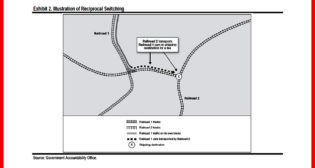
EPA Eyes Air Emissions Reporting Requirement Revisions
Written by Marybeth Luczak, Executive Editor
The Environmental Protection Agency (EPA) is proposing changes to its Air Emissions Reporting Requirements, which would involve state, local and certain tribal air agencies providing emissions data using different approaches and owners/operators of some facilities reporting additional emissions data.
Specifically, EPA said in its Aug. 8 Federal Register report (download below), it is “proposing to require certain sources report information regarding emission of hazardous air pollutants (HAP); certain sources to report criteria air pollutants, their precursors and HAP; and to require state, local, and certain tribal air agencies to report prescribed fire data.” The proposed revisions would also “define a new approach for optional collection by air agencies of such information on HAP by which state, local and certain tribal air agencies may implement requirements and report emissions on behalf of owners/operators.” Additionally, the proposed revisions would “make the requirements for point sources consistent for every year; phase in earlier deadlines for point source reporting; and add requirements for reporting fuel use data for certain sources of electrical generation associated with peak electricity demand.” The proposed revisions, EPA said, include “further changes for reporting on airports, rail yards, commercial marine vessels, locomotives and nonpoint sources.”
EPA said that it is proposing a new approach for states to provide emissions data for aircraft, ground support equipment (GSE), and rail yards for triennial inventory years. “Many states have voluntarily provided this information for past triennial inventories, with the EPA providing landing and takeoff (LTO) data for aircraft and emissions for rail yards for state review and comment,” the federal agency reported. “This action proposes to require states to treat these sources as point sources and to either (1) report aircraft activity data (i.e., LTO data) for some or all aircraft and emissions from rail yards, (2) report emissions for some or all aircraft, GSE, and some or all rail yards, or (3) comment on and/or accept EPA’s activity data and emissions estimates.”
EPA also proposes provisions for locomotive sources. EPA said it works with railroads to collect the data about locomotive activity that is also connected to rail yard emissions and is seeking to “add a requirement in § 51.15(d)(4) that states must either (1) report annual actual emissions of required pollutants, (2) provide comment on EPA-provided annual actual emissions data, or (3) accept EPA-provided emissions data.”
According to EPA, state, local and some tribal agencies under the current Air Emissions Reporting Requirements are required to report emissions of criteria air pollutants and precursors (collectively, “CAPs”) to EPA. Required pollutants under the current rule are carbon monoxide (CO), NOX, volatile organic compounds (VOC), sulfur dioxide (SO2), ammonia (NH3), PM2.5, PM with an aerodynamic diameter less than or equal to 10 microns (PM10), and Pb, said EPA, noting that these agencies may optionally report emissions of HAP and other pollutants.
EPA explained that the proposed amendments would ensure that it has “sufficient information to identify and solve air quality and exposure problems.” Additionally, they would allow the EPA to have information “readily available” to protect public health and perform other activities under the Clean Air Act, and “ensure that communities have the data needed to understand significant sources of air pollution that may be impacting them—including potent carcinogens and other highly toxic chemicals linked with a wide range of chronic and acute health problems.” EPA pointed out that it has taken a “systematic approach in developing this proposed action to ensure that key emissions information is collected in a streamlined way, while preventing unnecessary impacts to small entities within the communities we seek to inform and protect.”
Separately, the California Air Resources Board (CARB) in April passed a new rule aimed at reducing emissions from locomotives when they operate within the state. The Association of American Railroads and the American Short Line and Regional Railroad Association in June filed a lawsuit, on behalf of their members, against CARB, challenging the rule, which they said “would limit the useful life of today’s locomotive fleet (more than 25,000 locomotives) and mandate their premature replacement with zero-emissions locomotives.”



